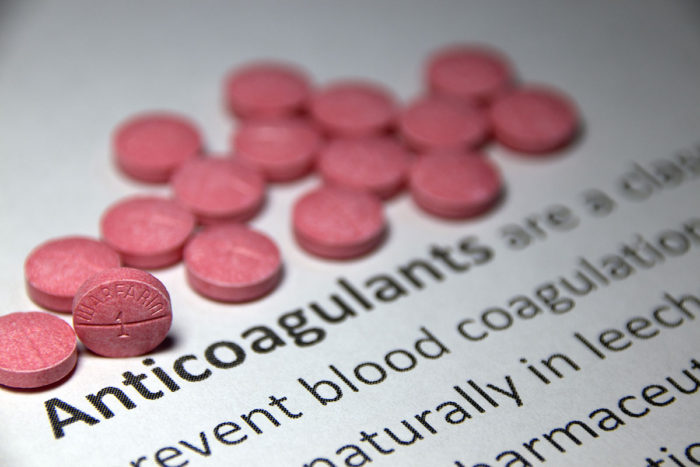Genetic testing helps set safe dose of common blood thinner
Warfarin safety improves when key genes considered
 Getty Images
Getty ImagesA new study led by Washington University School of Medicine in St. Louis shows that genetic testing can improve the safety of warfarin, a common blood thinner, for patients at high risk of dangerous blood clots.
Warfarin is a blood thinner that is commonly prescribed to patients to prevent life-threatening blood clots. Despite its longtime use, warfarin remains tricky to dose because a person’s genetic makeup influences how the drug is processed in the body. Too much warfarin can cause internal bleeding; too little warfarin fails to prevent blood clots.
Now, a new study led by Washington University School of Medicine in St. Louis shows that dosing warfarin (Coumadin and others) is safer — producing fewer adverse events such as hemorrhage — when key elements of a patient’s genetic makeup are considered.
The research, published Sept. 26 in the Journal of the American Medical Association, reports results from the clinical trial known as GIFT (Genetics Informatics Trial of Warfarin to Prevent Deep Venous Thrombosis).
“Physicians have been prescribing warfarin since the Eisenhower administration,” said first author Brian F. Gage, MD, a professor of medicine at Washington University School of Medicine in St. Louis. “It’s a widely used anticoagulant, but it causes more major adverse events than any other oral drug. Thousands of patients end up in the emergency department or hospital because of warfarin-induced bleeding. But we continue to prescribe it because it is highly effective, reversible and inexpensive. So our goal is to make warfarin safer. GIFT showed that precision-medicine based on clinical factors and three genes improves the safety of initiating warfarin therapy.”
Patients in the trial were randomly assigned to one of two groups. One group received warfarin dosing based on standard factors such as age, height and weight; the second group was dosed based on these clinical factors plus genetic variants. Participating sites in the trial included Washington University School of Medicine, Hospital for Special Surgery in New York, Intermountain Healthcare, University of Utah, and Rush University Medical Center.
Of the 789 patients who were dosed in the traditional manner, 116 experienced at least one adverse event (14.7 percent). Of the 808 patients whose warfarin dosing was guided by genetic testing, 87 experienced an adverse event (10.8 percent). Compared with patients receiving traditional warfarin dosing, patients dosed with the genetic approach had a 27 percent reduction in adverse events, which was statistically different. The adverse events were bleeding, formation of blood clots in the veins and warfarin overdoses. No patient died during the trial.
Earlier studies looking at whether genetic testing could improve warfarin dosing had produced conflicting results. However, these studies were smaller and considered fewer genes than GIFT. GIFT enrolled 1,600 patients age 65 and older at high risk of blood clots because they underwent hip- or knee-replacement surgeries.
Unlike prior studies, GIFT took into account genetic variants in three genes for 11 days of warfarin therapy. Genetic variants were assessed on a commercial platform called GenMarkDx. Variants in one gene affect vitamin K recycling. Variants in another gene affect warfarin sensitivity. Variants in the third gene alter warfarin metabolism in the liver and can cause an overdose if the dose is not adjusted soon enough.
“There are additional genetic variants that may help to guide warfarin dosing, especially among patients with African ancestry,” Gage said. In the future, we hope to quantify how these variants affect warfarin.”
Gage also noted how health-care costs relate to dosing warfarin in a genetically guided manner. “Although genetic testing is more expensive than clinical dosing, the cost is falling,” he said. “In our study, we estimated that genetic testing costs less than $200 per person, which is less than one month of a newer anticoagulant.”






